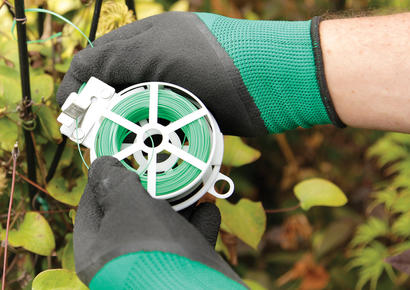
An early start on the veg plot
It’s February, and spring is on the horizon. Fresh spear-like foliage of narcissus and tulips are pushing up through frosty soil, while worms are pulling leaf litter down into the earth. High summer is five to six months away, and there’s a full three quarters of a year until the bountiful autumn harvest season of October.
If you want to be lifting potatoes this year, seed potatoes should still be available in garden centres now, but not for long. Enthusiastic gardeners will leave their potatoes to chit, which means stimulating them to sprout by leaving them somewhere fairly warm. This is thought to increase their overall yield, but scientific studies show chitted potatoes produce a similar total yield to un-chitted, but produce fewer but larger spuds. This carries the benefit of potatoes that are easier to find when you fork through the soil. To chit your tatties, stand them up in an open egg box on a window sill. Do this about 6 weeks before you intend to plant them out. This depends on what type of potato they are and where you live - the packet usually has the info you’ll need.
Garlic bulbs and japanese onions are normally stocked near the seed potatoes, so pick up a few of those too. On lighter soils or further south, you can probably plant these out now, otherwise wait a month or so. Don’t forget to split the garlic bulbs into individual cloves - each one will grow a new bulb around it. If you still have garlic leftover from last year, don’t be tempted to plant their cloves out. There’s a very good chance they’ll have picked up a fungal pathogen, but you’ll only realise later in summer when you harvest them only to find the bulbs a fuzzy rotten mush.
Greenhouse crops like tomato, cucumber and chillies are often best sown this month, but only if you have somewhere bright and frost-free for them to grow on in pots before being planted into the greenhouse in spring. Without good light, the plants will become floppy and etiolated. These seeds need some warmth to germinate. If you don’t have a heated propagator, try sowing the seeds directly onto a wet paper towel in a clear plastic tub. Put the lid on, and leave on a warm windowsill. Keep an eye out for signs of germination, at which point carefully pot them up into room-temperature compost, so they don’t get a shockfrom compost as cold as your shed.
You can pre-warm some areas of open ground ready for early direct seed sowing, by placing cloches, which act like mini greenhouses on the soil. Corrugated plastic sheets bent over and held in place with pig-irons (also known as rough-neck fencing pins) make cheap, long lasting and easily stored cloches. Under these, you can sow broad beans, carrots, parsnips, beetroot, lettuce, radish, peas, spinach and cabbage. Could there possibly be a more hopeful way to mark the end of winter, and the dawn of spring?


